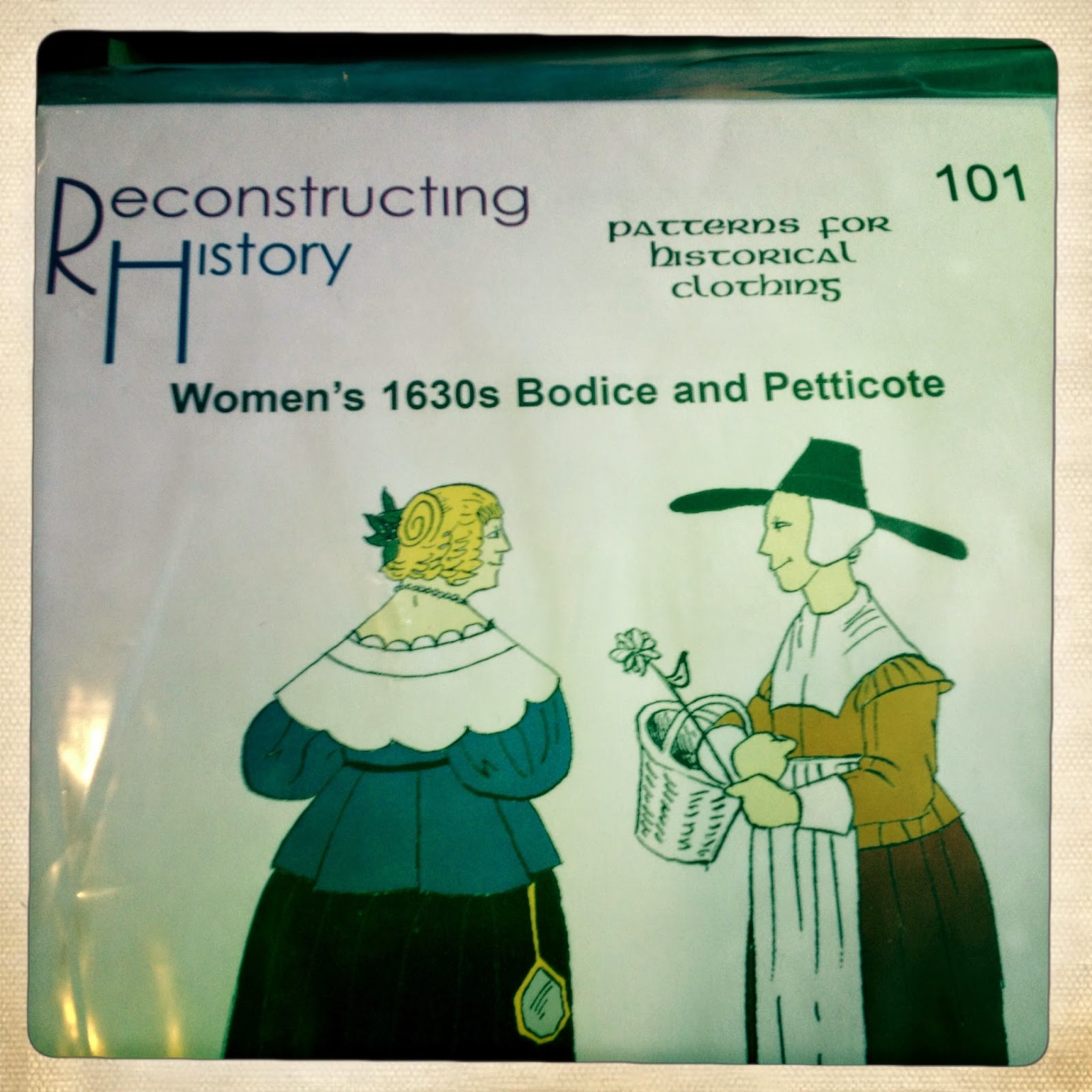She had been given a new assignment because of the 400 anniversary of the peace in Knäred 1613.
She needed a complete garb to wear when giving guided tours and for visits in school.
http://www.laholm.se/upptack-laholm/evenemangskalender/400-ars-firande-av-freden-i-knared/
That is actually her in the garb I made in the first photo :)
On the 20th of January 1613 the two year Kalmar war ended at a cross road between Knäred in Halland and Markaryd in Småland. This historical event became known as the peace in Knäred and was celebrated on a large scale in 2013.
So.. I hit the books :)
I mostly used information I found online and Janet Arnold's great books "Patterns of fashion" and I also bought pattern 101 from Reconstructing History.
When Lis came over the first time I had already prepared a toile (fabric pattern) for the petticote and then I took the rest of her measurements for the skirt. The skirt is made out of straight pieces and needed no pattern.
I sewed most of the petticote by hand even though I didn't have to, I wanted to.
I put old lace from late 19th century on the sleeves and covered the seams with satin tape. It also closes
with satin tape. (I have later on added some trouser hooks to keep the petticote together because the satin is slightly slippery)
The skirt was very straight forward. I cut a rectangle long enough to go around her waist and overlap by 10cm. I cut 2 pieces long enough from the waistline to the floor at the width of the fabric, sewed them together and pleated them to the waistband using boxed pleats.
I added velvet trim to the bottom of the skirt.
Well no 17th century lade would go around with a small bum so I had to make a bum roll. The one in the pic is my first try but I've now made a new one that is like a sausage ring that goes all the way round (and is more period). I did forget to photograph it though..
I added velvet trim to the bottom of the skirt.
Well no 17th century lade would go around with a small bum so I had to make a bum roll. The one in the pic is my first try but I've now made a new one that is like a sausage ring that goes all the way round (and is more period). I did forget to photograph it though..
 |
| Hester Tradescant (from Patterns of Fashion no 4) by Thomas de Critz 1645. Ashmolean Museum, University of Oxford. |
 |
| Autumne, etching by Wenceslaus Hollar 1643. The trustees of the British Museum. (from Patterns of Fashion no 4) |
Patterns of Fashion no 4
1. Embroidered linen coif c. 1600-10. Middleton Collection, Museum of Costume and Textiles, Nottingham.
2. Embroidered linen coifc. 1610-20. Museum of Fine Arts, Boston
3. Embroidered linen coif c. 1590-1600 (National Museums of Scotland, Edinburgh) / 1610-15 (Burrell Collection, Glasgow) / 1610-20 (Burrell Collection, Glasgow).
Time for a collar and some type of headgear.. Back to the books.
I decided to make a standard linen coif but without the embroidery since that wasn't in the budget. Tried to find a patterned linen with a more swirly design but failed there too.. so I got a somewhat patterned linen to make the coif out of.
First I looked at all the photos there are of the 16-17th century type linen coif laid out flat.
Then took a lot of meassurements on my own head to have some type of referense and then I mae a toile (as I always tend to do)
The second to last pattern (the cheek bibs were still too large.
I added a simple lace and lined the coif with a plain white linen.
The finished coif. Quite pleased! Have to make an embroidered one for myself (with the extra headpiece that goes on underneath).
You can find PLENTY of different instructions by searching on Pinterest *love* http://www.pinterest.com/search/pins/?q=elizabethan%20coif
You can find my boards there too http://www.pinterest.com/aelfwynne/



Customer Lis in her (almost) finished garb for 1610. The collar needs a large lace.. (sorry for the crappy pics..). When she's out in the schools the kids love her "duck but" (ankrumpa in Swedish)
It took me a total of ca 55 hours to complete.
It took me a total of ca 55 hours to complete.














Inga kommentarer:
Skicka en kommentar